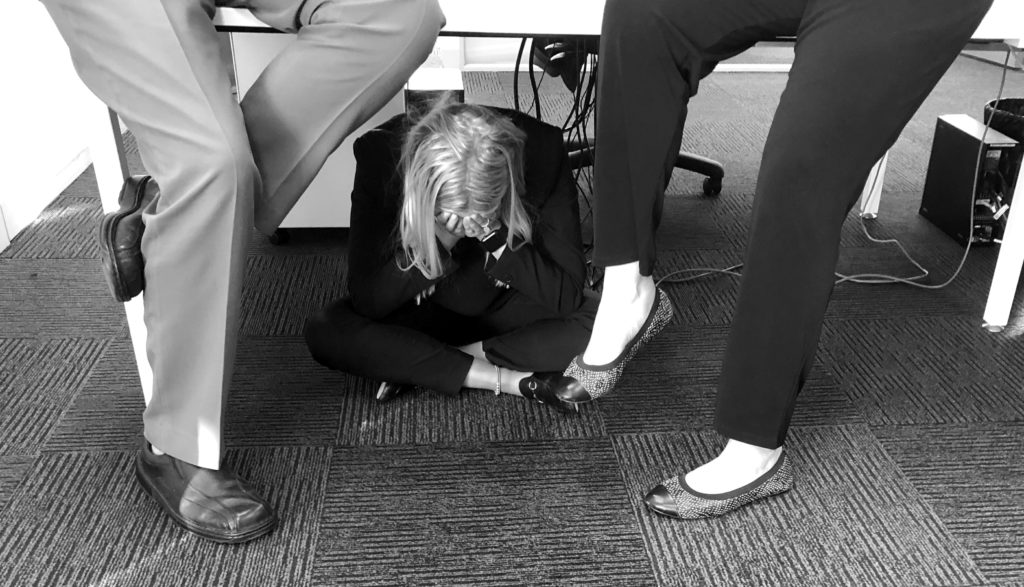By Stephen Bell - Founder/Managing Director I really admire the research done by Monash University’s Professor Helen De Cieri in regard to workplace safety and well-being, including bullying. Of particular interest to me is her emphasis on the need for organisations to focus on leading indicators, not lagging indicators, in order to assess the performance of their work cultures and potential risks of workplace incidents. It is insightful work and reinforces my long-term view that leadership capability and the health of workplace culture are critical factors to develop and monitor as part of a risk management strategy. This is why twelve years
By Stephen Bell – Founder/Managing Director
I really admire the research done by Monash University’s Professor Helen De Cieri in regard to workplace safety and well-being, including bullying. Of particular interest to me is her emphasis on the need for organisations to focus on leading indicators, not lagging indicators, in order to assess the performance of their work cultures and potential risks of workplace incidents. It is insightful work and reinforces my long-term view that leadership capability and the health of workplace culture are critical factors to develop and monitor as part of a risk management strategy. This is why twelve years ago iHR Australia renamed its Workplace Discrimination, Harassment and Bullying for Managers’ training program to ‘Custodians of Culture’.

In the light of Professor De Cieri’s research showing the importance of leadership and culture, I want to suggest six organisational actions that are critical to reducing the risk of potential litigation related to bullying and harassment claims, including sexual harassment:
1. Design selection criteria for manager roles that focus on people and relationship skills as well as the technical requirements. It’s not ok to promote brilliant professionals who have a poor track record in people relationships. Do not assume the great technician will be great with people.
2. Do not limit your manager training budgets to compliance and technical skills training. Well-designed leadership programs such as iHR Australia’s ‘Stepping Up’ program are essential to explaining what is expected of a leader in 2018. High technical skills, but low people skills, are a constant theme in iHR Australia’s workplace investigations.
3. Read and apply Professor De Cieri’s work on monitoring the health of a work culture in order to identify cultural shortfalls and challenges that increase the risk of incidents. Do not use lagging indicators such as workers compensation claims related to bullying and harassment as the cornerstone of your risk mitigation approach.
4. The fact that your managers and supervisors are perceived by employees to be approachable and objective is critical. We want people who feel aggrieved, threatened or humiliated to speak to their manager or another manager they trust. Contact officers are great if properly trained. Trust is a huge factor in any effort to mitigate the risk of bullying and harassment incidents.
5. Training about harassment and bullying needs to be engaging. Tick and flick eLearning experiences alone aren’t going to set or change mindsets. Whatever the organisation offers in terms of training needs to be well thought-out, interesting and compliant with Australian laws.
6. Consistently use and communicate a comprehensive complaints’ handling process that affords natural justice to all parties. Every leader in your organisation must know how to use it, and how not to trivialise or be judgemental about complaints. When people don’t trust the complaints handling process and the people who put it into action, they will take their complaints to an external forum.
While work has to be challenging and professional, it also needs to be enjoyable and engaging. A heavy-handed compliance approach is disengaging and will not only negatively impact on performance, but heighten risk. A workplace where people can perform, are respected and respectful, and also have a laugh together, is a healthy workplace.
Read more about iHR Australia’s leadership and management training, workplace anti bullying, discrimination and harassment training and work in the area of workplace investigations.
[gravityform id=”30″ title=”false” description=”true”]
Upskill your people with these topics
We have hand picked these training topics relevant to the above article.
Recent articles
![Lee Witherden v DP World Sydney Limited [2025] FWC 294 (2) Workplace policies](https://ihraustralia.com/wp-content/uploads/bb-plugin/cache/Lee-Witherden-v-DP-World-Sydney-Limited-2025-FWC-294-2-1024x539-landscape-dc731230e07743843bfa2c830cc42561-.png)
Smart Workplace Policies, Stronger Cultures: Compliance Made Clear



